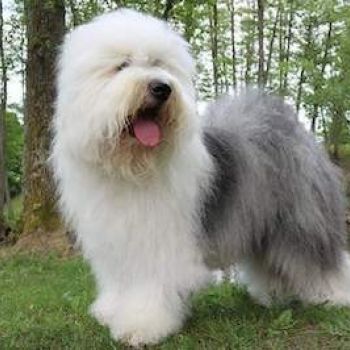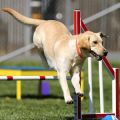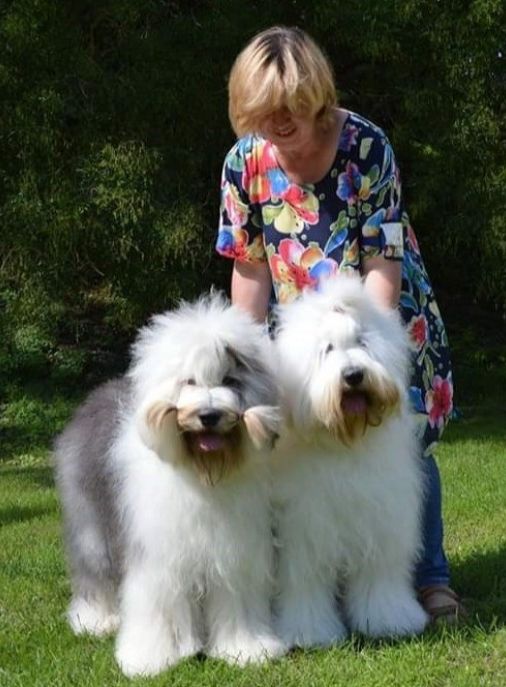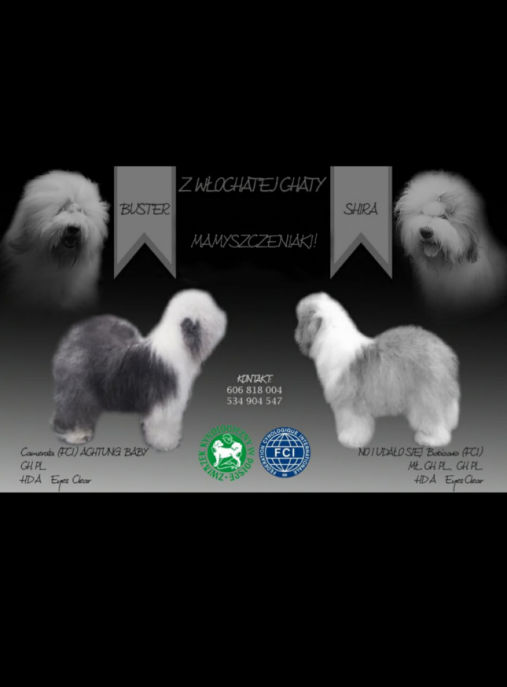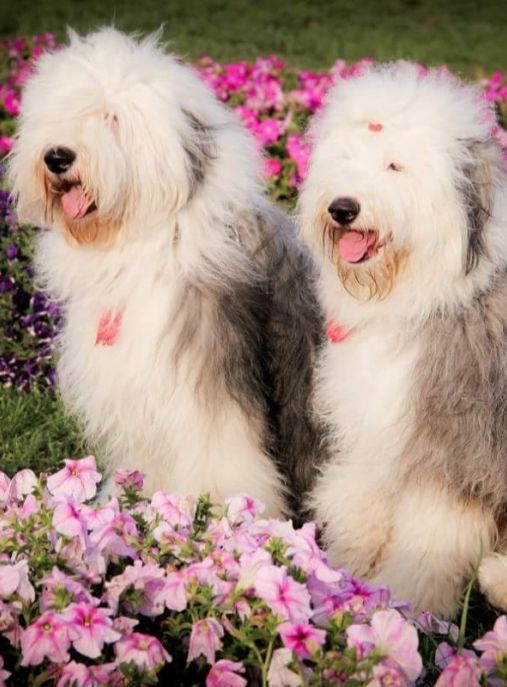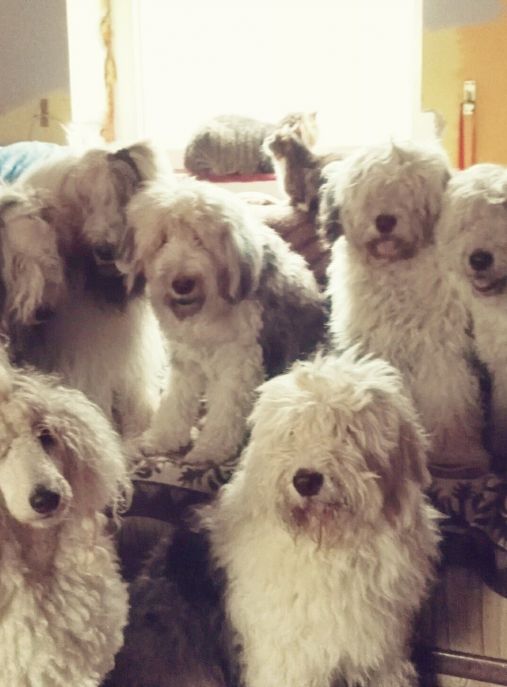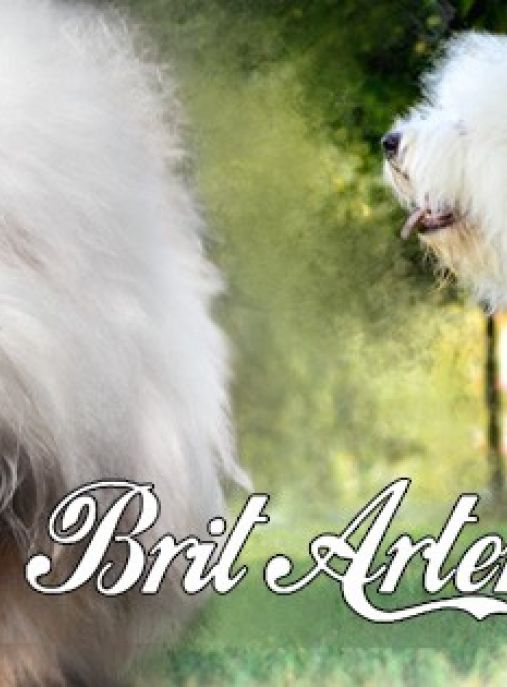The Old English Sheepdog, also known as the Bobtail, is a charming and distinctive breed that has captured the hearts of dog lovers worldwide. With its shaggy coat, bobbed tail, and endearing expression, this breed is easily recognizable and adored by many. In this text, we will delve into the fascinating history of the Old English Sheepdog - Bobtail, explore its characteristics, and uncover interesting facts about this beloved breed.
Originating in England, the Old English Sheepdog - Bobtail has a rich history that dates back several centuries. While the exact origins of the breed remain somewhat unclear, it is believed to have descended from various herding dogs, including the Bearded Collie and the Russian Owtchar. These dogs were primarily used for herding and protecting livestock, particularly sheep, in the rugged and challenging terrain of the English countryside.
According to the Fédération Cynologique Internationale (FCI), the Old English Sheepdog - Bobtail belongs to Group 1: Sheepdogs and Cattledogs (except Swiss Cattledogs). This group encompasses breeds that were traditionally used for herding and guarding livestock. Within this group, the Old English Sheepdog - Bobtail is classified under Section 1: Sheepdogs. This section includes breeds that were specifically developed for herding sheep.
The Old English Sheepdog - Bobtail is a versatile breed that can serve various roles. Historically, it excelled as a herding dog, skillfully guiding and protecting flocks of sheep. Today, it continues to showcase its herding instincts in various dog sports and competitions. Additionally, its friendly and affectionate nature makes it an excellent companion and family pet. Its intelligence and willingness to please also make it suitable for obedience training and other canine activities.
In terms of physical characteristics, the Old English Sheepdog - Bobtail is a large and sturdy breed. Males typically weigh between 70 to 100 pounds (32 to 45 kilograms), while females generally weigh slightly less, ranging from 60 to 85 pounds (27 to 39 kilograms). The height at the shoulder for males is around 22 inches (56 centimeters), and for females, it is slightly smaller at 21 inches (53 centimeters).
One of the most distinctive features of the Old English Sheepdog - Bobtail is its dense and weather-resistant double coat. The outer coat is long, shaggy, and abundant, providing excellent protection against harsh weather conditions. The undercoat is soft and insulating, keeping the dog warm in colder climates. The coat comes in various shades of gray, with or without white markings. Regular grooming is essential to prevent matting and maintain the coat's health and appearance.
The life expectancy of the Old English Sheepdog - Bobtail is typically around 10 to 12 years. However, with proper care, nutrition, and regular veterinary check-ups, some individuals have been known to live even longer. It is important to note that this breed may be prone to certain health issues, including hip dysplasia, progressive retinal atrophy, and deafness. Responsible breeders conduct health screenings to minimize the risk of these conditions.
Despite its large size, the Old English Sheepdog - Bobtail is known for its gentle and friendly temperament. It is a sociable breed that thrives on human companionship and enjoys being part of the family. This breed is generally good with children and other pets, making it an ideal choice for households with multiple animals. However, early socialization and proper training are crucial to ensure a well-rounded and obedient companion.
In addition to its endearing appearance and amiable nature, the Old English Sheepdog - Bobtail possesses several other interesting traits. Its intelligence and problem-solving abilities make it a quick learner, although it may occasionally exhibit a stubborn streak. This breed also has a strong herding instinct, which may manifest in behaviors such as nipping at heels or attempting to gather and control groups of people or animals.
The Old English Sheepdog - Bobtail's playful and energetic nature requires regular exercise to keep it physically and mentally stimulated. Daily walks, interactive play sessions, and opportunities to engage in dog sports or activities are essential for its overall well-being. While it can adapt to apartment living with sufficient exercise, a spacious yard or access to open spaces is preferable for this active breed.
In conclusion, the Old English Sheepdog - Bobtail is a captivating breed with a fascinating history and a range of endearing qualities. From its origins as a hardworking herding dog to its role as a beloved family companion, this breed has left an indelible mark on the hearts of dog enthusiasts worldwide. With its distinctive appearance, friendly temperament, and intelligence, the Old English Sheepdog - Bobtail continues to bring joy and companionship to those fortunate enough to share their lives with this remarkable breed.
The Old English Sheepdog, also known as the Bobtail, is a charming and lovable breed that captures the hearts of many dog enthusiasts. With their distinctive shaggy coat and bobbed tail, these dogs possess a unique and endearing appearance. However, their character goes far beyond their physical attributes. Let's delve into the character of Old English Sheepdogs and explore their behavior, upbringing, and training.
Old English Sheepdogs are renowned for their friendly and gentle nature. They are incredibly sociable and thrive on human companionship. These dogs are known to be excellent family pets, as they are patient and tolerant, especially with children. Their playful and affectionate demeanor makes them a joy to be around, and they often form strong bonds with their owners.
One of the defining characteristics of Old English Sheepdogs is their intelligence. They are highly trainable and eager to please, making them quick learners. However, they can also be independent thinkers, so consistent and patient training methods are essential. Positive reinforcement techniques, such as treats, praise, and rewards, work best with these dogs. Harsh or forceful training methods should be avoided, as they can lead to fear or anxiety in the dog.
Due to their herding background, Old English Sheepdogs have a natural instinct to protect and guard. While this trait can make them excellent watchdogs, it also means they may be wary of strangers. Early socialization is crucial to ensure they grow up to be well-rounded and friendly dogs. Exposing them to various people, animals, and environments from a young age will help them develop into confident and well-behaved companions.
Old English Sheepdogs are an active breed that requires regular exercise to keep them physically and mentally stimulated. Daily walks, playtime, and interactive games are essential to prevent boredom and destructive behavior. They also enjoy participating in dog sports such as obedience, agility, and herding trials. Engaging their minds and bodies will help maintain their overall well-being.
Grooming is a significant aspect of owning an Old English Sheepdog. Their thick, double coat requires regular brushing to prevent matting and tangling. Many owners opt to keep their dogs' coats trimmed to a manageable length, reducing the grooming time and making it easier to maintain. Regular bathing, nail trimming, and ear cleaning are also necessary to keep them clean and healthy.
When it comes to raising an Old English Sheepdog puppy, early socialization and training are crucial. Expose them to various sights, sounds, and experiences to build their confidence and prevent fear or aggression issues later in life. Consistency, positive reinforcement, and patience are key when training these intelligent dogs. Enroll them in puppy classes or seek guidance from a professional dog trainer to ensure they receive the best start in life.
In conclusion, Old English Sheepdogs are delightful and affectionate companions with a friendly and gentle nature. Their intelligence and trainability make them a joy to train, but they require consistent and patient guidance. Early socialization, regular exercise, and proper grooming are essential to raising a well-rounded and happy Old English Sheepdog. With the right care and attention, these lovable Bobtail dogs will bring years of joy and companionship to their owners.
The Old English Sheepdog, also known as the Bobtail, is a large and lovable breed known for its shaggy coat and gentle nature. Caring for these dogs requires a combination of grooming, exercise, and attention to their specific needs. Here are some tips on how to care for Old English Sheepdogs and what to do and not to do in their care.
Grooming:
1. Regular brushing: The Old English Sheepdog's double coat requires regular brushing to prevent matting and keep it clean. Aim for at least two to three brushing sessions per week.
2. Bathing: These dogs have a weather-resistant coat, so avoid frequent bathing as it can strip the natural oils. Bathe them only when necessary, using a dog-specific shampoo.
3. Trimming: Regular trimming of the hair around the eyes, ears, and paws is essential to maintain cleanliness and prevent infections.
4. Professional grooming: Consider taking your Old English Sheepdog to a professional groomer every few months for a thorough grooming session, including trimming, nail clipping, and ear cleaning.
Exercise:
1. Daily walks: These dogs have moderate exercise needs, so aim for at least one long walk or two shorter walks daily to keep them physically and mentally stimulated.
2. Playtime: Engage in interactive play sessions with toys or games like fetch to provide mental stimulation and bond with your dog.
3. Off-leash time: Old English Sheepdogs enjoy off-leash time in a secure, fenced area where they can run and explore freely. Ensure the area is safe and free from hazards.
Healthcare:
1. Regular vet check-ups: Schedule regular visits to the veterinarian for vaccinations, dental care, and overall health check-ups.
2. Vaccinations and preventatives: Keep your dog up to date with vaccinations, flea, tick, and heartworm preventatives to protect them from common diseases and parasites.
3. Proper diet: Feed your Old English Sheepdog a balanced diet suitable for their age, size, and activity level. Consult your vet for specific dietary recommendations.
4. Weight management: Obesity can lead to various health issues, so monitor your dog's weight and adjust their diet and exercise accordingly.
Socialization and Training:
1. Early socialization: Expose your Old English Sheepdog to various people, animals, and environments from a young age to ensure they grow up to be well-rounded and friendly dogs.
2. Obedience training: These dogs are intelligent and respond well to positive reinforcement training methods. Enroll them in obedience classes to teach them basic commands and good manners.
3. Mental stimulation: Provide mental stimulation through puzzle toys, interactive games, and training sessions to prevent boredom and destructive behavior.
What to avoid:
1. Overfeeding: Avoid overfeeding or giving excessive treats, as it can lead to weight gain and related health issues.
2. Leaving them alone for long periods: Old English Sheepdogs thrive on human companionship and can become anxious or develop behavioral problems if left alone for extended periods. Ensure they have company or consider doggy daycare if you're away for long hours.
3. Harsh training methods: Avoid using harsh training techniques or punishment-based methods, as these dogs respond better to positive reinforcement and gentle guidance.
In conclusion, caring for an Old English Sheepdog requires regular grooming, exercise, healthcare, socialization, and training. By following these tips and providing them with love and attention, you can ensure a happy and healthy life for your beloved Bobtail.
The Old English Sheepdog, also known as the Bobtail, is a majestic and lovable breed that is instantly recognizable by its distinctive appearance. One of the defining characteristics of this breed is its unique coat color, which adds to its charm and allure.
The common color of Old English Sheepdogs is a striking combination of various shades of gray and white. The coat is predominantly gray, ranging from a light silver to a deep charcoal, with different shades blending together to create a beautiful and harmonious color palette. The gray coloration is often interspersed with patches of white, which adds a touch of brightness and contrast to the overall appearance of the dog.
The gray color of the Old English Sheepdog's coat can vary in intensity and depth, depending on the individual dog. Some may have a lighter shade of gray, resembling a soft and delicate mist, while others may have a darker hue, reminiscent of stormy skies. This variation in color adds to the uniqueness of each dog, making them truly one-of-a-kind.
The white patches on the coat of an Old English Sheepdog are usually found on the face, chest, and legs. These patches can range in size and shape, from small and scattered spots to larger, more defined areas. The white fur provides a striking contrast against the gray, creating a visually appealing pattern that is both eye-catching and elegant.
In addition to the gray and white coloration, some Old English Sheepdogs may also have hints of other colors in their coat. It is not uncommon to find dogs with subtle touches of black or brown, adding depth and dimension to their overall appearance. These additional colors are often found in the ears, tail, or around the eyes, further enhancing the beauty of the breed.
The coat of an Old English Sheepdog is not only visually appealing but also serves a practical purpose. It is thick, dense, and weather-resistant, providing protection against harsh elements and keeping the dog warm in colder climates. The texture of the fur is soft and woolly, giving the dog a cuddly and huggable appearance.
In conclusion, the common color of Old English Sheepdogs, or Bobtails, is a captivating blend of various shades of gray and white. This unique coloration, combined with their distinctive coat texture, makes them a truly remarkable and beautiful breed. Whether they are frolicking in the park or simply lounging at home, the Old English Sheepdog's coat is sure to turn heads and capture hearts.
The Old English Sheepdog, also known as the Bobtail, is a majestic and lovable breed with a distinctive shaggy coat and a friendly disposition. When it comes to their health, these dogs are generally robust and resilient. However, like any breed, they are prone to certain health issues that owners should be aware of to ensure their well-being.
One of the most common health concerns in Old English Sheepdogs is hip dysplasia. This condition occurs when the hip joint doesn't develop properly, leading to discomfort, lameness, and eventually arthritis. Regular exercise, a balanced diet, and maintaining a healthy weight can help minimize the risk of hip dysplasia. Additionally, breeding dogs should undergo hip evaluations to reduce the chances of passing on this condition to their offspring.
Another prevalent health issue in Bobtails is progressive retinal atrophy (PRA). PRA is a degenerative eye disease that causes gradual vision loss and can eventually lead to blindness. Regular eye examinations by a veterinary ophthalmologist are crucial to detect PRA early on. Unfortunately, there is no cure for this condition, but supportive care and adapting the dog's environment can help them cope with their diminishing vision.
Old English Sheepdogs are also prone to hypothyroidism, a condition where the thyroid gland doesn't produce enough hormones. Symptoms of hypothyroidism include weight gain, lethargy, hair loss, and skin problems. Regular blood tests can diagnose this condition, and treatment typically involves lifelong hormone replacement therapy.
Additionally, Bobtails are susceptible to certain skin issues, such as allergies and dermatitis. These dogs have a dense double coat that requires regular grooming to prevent matting and skin infections. Regular brushing, bathing with a gentle shampoo, and keeping the coat clean and dry can help reduce the risk of skin problems. It's also important to provide a balanced diet with essential fatty acids to promote healthy skin and coat.
Like many large breeds, Old English Sheepdogs are prone to bloat, a potentially life-threatening condition. Bloat occurs when the stomach fills with gas and twists, cutting off blood supply to vital organs. To minimize the risk of bloat, it's recommended to feed multiple small meals throughout the day instead of one large meal, avoid vigorous exercise immediately after eating, and use elevated feeding bowls.
Regular veterinary check-ups are essential for maintaining the overall health of Old English Sheepdogs. Vaccinations, parasite prevention, and dental care are all important aspects of their healthcare routine. Additionally, providing them with a balanced diet, regular exercise, mental stimulation, and a loving environment will contribute to their overall well-being.
In conclusion, while Old English Sheepdogs are generally healthy dogs, they are prone to certain health issues like hip dysplasia, PRA, hypothyroidism, skin problems, and bloat. By being proactive in their care, including regular veterinary check-ups, appropriate exercise, grooming, and a balanced diet, owners can help ensure the health and happiness of their beloved Bobtails.
The Old English Sheepdog, also known as the Bobtail, is a large and lovable breed with a distinctive shaggy coat and a friendly disposition. When it comes to their nutrition, it is crucial to provide them with a well-balanced diet that meets their specific needs. This comprehensive guide will offer advice on how and what to feed your Old English Sheepdog, as well as highlight some foods to avoid.
First and foremost, it is essential to choose a high-quality dog food that is specifically formulated for large breeds. Look for a brand that uses real meat as the primary ingredient and avoids fillers, artificial additives, and by-products. The food should also provide a balanced ratio of proteins, fats, and carbohydrates to support your dog's overall health.
Old English Sheepdogs are prone to certain health issues, such as hip dysplasia and obesity. To prevent these problems, it is crucial to monitor their calorie intake and maintain a healthy weight. Feeding your Bobtail twice a day, dividing their daily portion into two meals, is generally recommended. However, consult with your veterinarian to determine the appropriate amount of food based on your dog's age, weight, and activity level.
Proteins are essential for muscle development and overall growth. Look for dog food that contains high-quality sources of protein, such as chicken, beef, or fish. Additionally, including some fresh, lean meats in their diet can be beneficial. However, avoid feeding them raw or undercooked meat, as it may contain harmful bacteria.
Carbohydrates provide energy and should make up a smaller portion of your dog's diet. Opt for complex carbohydrates like whole grains, sweet potatoes, and brown rice, as they offer more nutritional value compared to simple carbohydrates. These ingredients also provide dietary fiber, which aids in digestion and helps prevent constipation.
Fruits and vegetables are an excellent addition to your Old English Sheepdog's diet. They provide essential vitamins, minerals, and antioxidants. Some safe options include carrots, green beans, apples, and blueberries. However, avoid feeding them grapes, raisins, onions, garlic, and avocados, as these can be toxic to dogs.
While dairy products can be enjoyed in moderation, some dogs may be lactose intolerant. If you choose to include dairy in their diet, opt for low-fat options like plain yogurt or cottage cheese. Avoid feeding them large amounts of cheese or milk, as it can lead to digestive issues.
Treats can be a great way to reward your Old English Sheepdog, but it's important to choose healthy options. Look for treats that are low in fat and made with natural ingredients. Alternatively, you can offer them small pieces of cooked chicken or vegetables as a treat.
Lastly, always ensure that your Bobtail has access to fresh, clean water throughout the day. Hydration is crucial for their overall health and well-being.
In conclusion, providing a well-balanced diet is essential for the health and longevity of your Old English Sheepdog. Choose high-quality dog food, monitor their calorie intake, and include a variety of proteins, carbohydrates, fruits, and vegetables. Avoid feeding them harmful foods and consult with your veterinarian for personalized advice. By following these guidelines, you can ensure that your beloved Bobtail remains happy, healthy, and full of energy.

